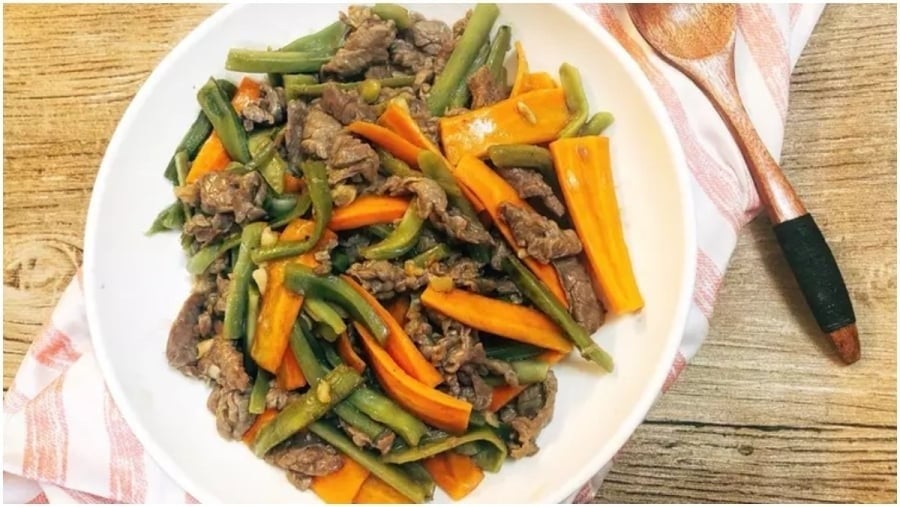The Benefits of Mountain Jelly Vegetable – A Royal Vegetable with Historical Significance
Mountain Jelly Vegetable, also known as Rau Tiến Vua in Vietnamese, is a unique vegetable with a rich history. It has various local names, including rau công sôi, rau cần biển, rau câu, and rau cần khô, depending on the region. This vegetable is a nutritional powerhouse, containing over 20 essential minerals and amino acids such as protein, pectin, calcium, iron, zinc, carotene, potassium, sodium, and phosphorus, to name a few.
In traditional medicine, Mountain Jelly Vegetable is believed to offer a plethora of health benefits. It is said to tonify the spleen, nourish the brain, improve mood, detoxify the body, aid in weight loss, regulate blood pressure, promote cardiovascular health, enhance blood circulation, and improve digestive function. Regular consumption of this vegetable is thought to boost overall health and even contribute to longevity.
Additionally, the abundant presence of vitamin E in Mountain Jelly Vegetable lends itself to its ability to cool the body, support detoxification, reduce wrinkles, and maintain youthful skin. The high fiber content creates a natural barrier in the stomach, limiting the absorption of harmful cholesterol and inhibiting the formation of free radicals, which are known contributors to chronic illnesses, including cancer.
Selecting and Preparing Mountain Jelly Vegetable for Optimal Taste and Nutrition
When choosing Mountain Jelly Vegetable, look for vibrant deep green stalks that are fresh and firm, avoiding any yellowing or wilted leaves. Ensure they have a natural aromatic scent and are of uniform size. If opting for dried Mountain Jelly Vegetable, make sure it is free from mold and has a consistent color.
Prior to cooking with dried Mountain Jelly Vegetable, it is recommended to soak them in clean water for 4-6 hours to allow them to rehydrate and soften. For the best crunch and texture, use cold or iced water for soaking. After soaking, rinse them thoroughly and cook them as you would fresh vegetables. Mountain Jelly Vegetable can be enjoyed raw alongside other dishes or transformed into delicious stir-fries with seafood, beef, or pork, or even made into a refreshing salad.

Mountain Jelly Vegetable, with its scientific name of Mountain Jelly Vegetable, is more than just a vegetable; it is a culinary and nutritional treasure. Its various local names, including rau công sôi, rau cần biển, rau câu, and rau cần khô, reflect its importance in different regions.
This vegetable is a storehouse of over 20 essential minerals and amino acids, such as protein, pectin, calcium, iron, zinc, carotene, potassium, sodium, and phosphorus. Its nutritional profile makes it a valuable addition to any diet.
In traditional medicine, Mountain Jelly Vegetable is believed to offer a wide range of benefits. It is said to strengthen the spleen, nourish the brain, enhance mood, detoxify the body, aid in weight loss, regulate blood pressure, promote heart health, improve blood circulation, and support digestive functions. Incorporating this vegetable into your diet is thought to boost overall health and even contribute to a longer life.

The abundance of vitamin E in Mountain Jelly Vegetable contributes to its ability to cool and detoxify the body, reduce wrinkles, and maintain youthful skin. The high fiber content creates a protective barrier in the stomach, limiting the absorption of harmful cholesterol and inhibiting the formation of free radicals, which are associated with chronic diseases, including cancer.
Selecting and Preparing Mountain Jelly Vegetable for Optimal Taste and Nutrition
For dried Mountain Jelly Vegetable, it is recommended to soak them in clean water for 4-6 hours to rehydrate and soften them. Using cold or iced water will help retain their crisp texture. After soaking, give them a thorough rinse and cook them as you would fresh vegetables. Mountain Jelly Vegetable can be enjoyed raw, stir-fried with seafood, meat, or turned into a delicious salad.






























